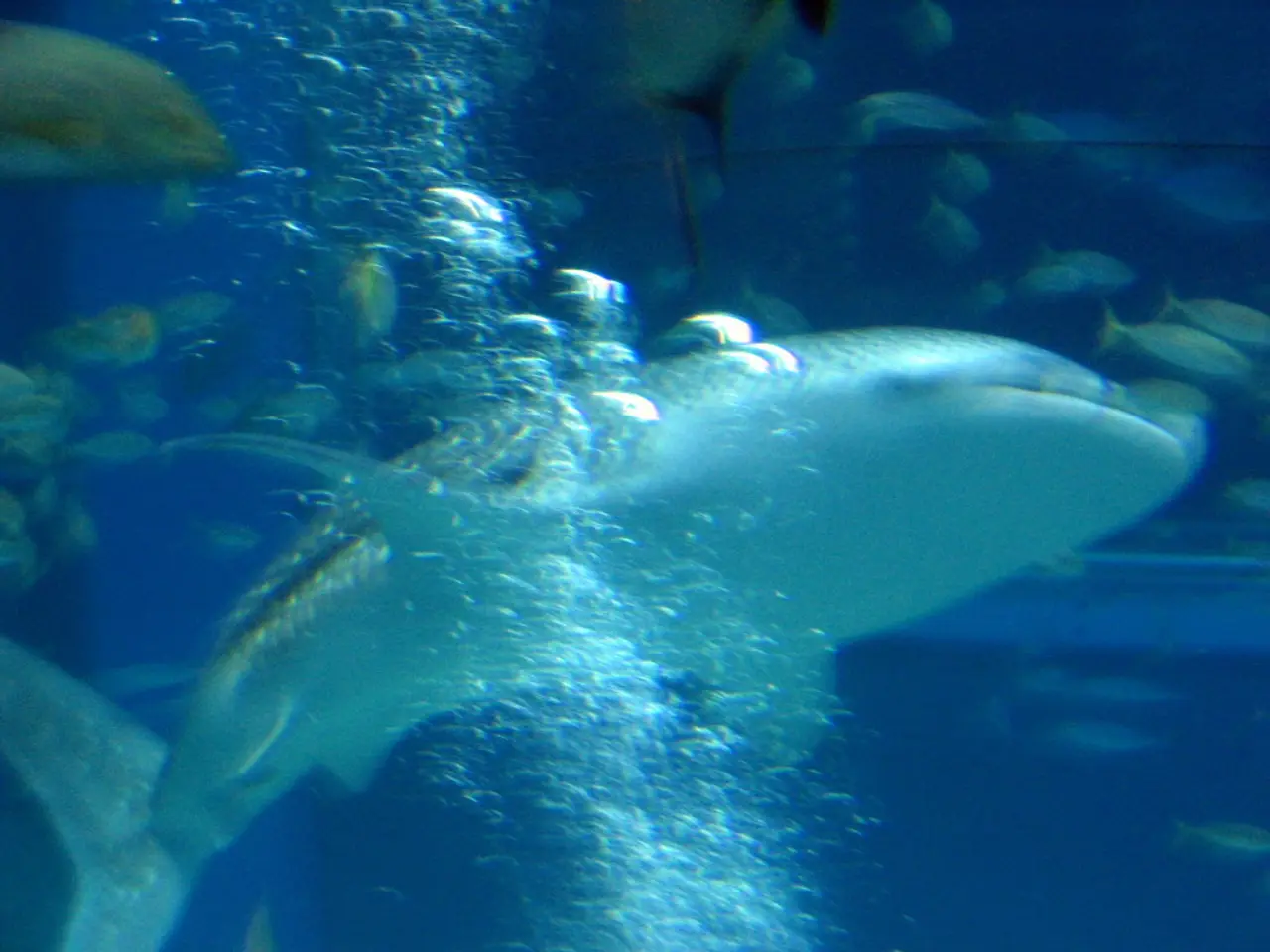Implementing Intelligent Fishing Regulations to Protect Sharks
### A Closer Look at Retention Bans and Shark Mortality
Sharks, the apex predators of the ocean, are among the most threatened marine animals, with their populations experiencing steep declines due to overfishing and bycatch. A recent study led by Leonardo Feitosa at UC Santa Barbara's Bren School of Environment has shed light on the effects of retention bans on shark mortality, a critical issue in the conservation of these majestic creatures.
Retention bans, which prohibit the retention of certain shark species on fishing vessels, have shown mixed results. In certain regions, these bans have been effective in reducing shark mortality, particularly for highly threatened species[1][4]. However, the effectiveness of retention bans can vary depending on the specific fishery and the regulations in place. For instance, while wedgefish mortality decreased under similar measures, hammerhead shark mortality increased in one scenario[2].
The continued practice of shark finning, where sharks are caught and their fins are removed before being discarded back into the ocean, remains a significant concern. This practice not only harms sharks but also complicates enforcement efforts as it becomes difficult to identify the species based on fins alone[5]. Moreover, the lack of a global evaluation of protective regulations means there are likely gaps in current management strategies. Research indicates that while some regional bans have been successful, broader issues such as the rising total fishing mortality of sharks remain unresolved[1].
Closures of fishing areas can have socio-economic impacts on fishing communities, highlighting the need for comprehensive management strategies that consider both conservation goals and the livelihoods of those involved in fishing[3]. To enhance the protection of threatened shark species, future management should focus on evidence-based policies, comprehensive regulations, and support for fishing communities.
The study, which used data from 160 previous studies across 147 shark species, found that retention bans led to a three-fold decrease in fishing mortality for most shark species, but not all species benefited equally[6]. Retention bans don't address how or why sharks are getting caught in the first place, meaning they don't reduce how often sharks are hooked.
The study also highlighted the importance of handling and releasing sharks safely. Training fishing crews to handle and release sharks safely can make a big difference in whether the animals survive. For instance, using circle hooks instead of J hooks can reduce the chances of a shark swallowing the hook and suffering internal injuries[7]. Sharks that live in shallow coastal areas and tend to be smaller often died at higher rates before being released[7]. Species like oceanic whitetip, threshers, hammerheads, and sand tiger sharks - all considered threatened by the IUCN - are particularly vulnerable[7].
In many parts of the world, retention bans require sharks to be released back into the sea instead of being kept or sold. However, a growing body of research suggests that being released doesn't always ensure survival for sharks. Shorter soak times for fishing lines can reduce both AVM (after-vessel mortality) and PRM (pre-release mortality)[7]. A longline with baited hooks suspended in the water above the shark poses a threat, potentially leading to AVM[7].
More than half of the caught sharks are discarded as bycatch, often in longline and gillnet fisheries[7]. To further protect threatened shark species, it is crucial to address the issue of bycatch and develop strategies that support the economic adaptation of fishing fleets as they adjust to new regulations. By taking these steps, we can work towards ensuring the survival of these essential ocean predators and maintaining a healthy and balanced marine ecosystem.
References: [1] Baum, J. K. A., & Pratt, R. M. (2012). Global shark and ray populations: Past, present, and future. Trends in Ecology & Evolution, 27(12), 638-647.
[2] Worm, B., Baum, J. K. A., & Myers, R. A. (2006). Impacts of fishing on marine ecosystems. Science, 313(5793), 956-959.
[3] Hilborn, R., & Kell, D. (2007). Fishing down marine food webs. Trends in Ecology & Evolution, 22(11), 578-585.
[4] Almany, R. E., & Roberts, C. M. (2009). Effects of shark protection on shark populations and ecosystems. Fisheries, 34(4), 111-124.
[5] Myers, R. A., Worm, B., Baum, J. K. A., Baxter, J. M., Berger, S., Burgess, N. D., ... & Heithaus, M. R. (2013). Rapid worldwide depletion of shark and ray populations. Nature, 496(7445), 581-585.
[6] Feitosa, L. F., Gutierrez, G. M., & Baum, J. K. A. (2019). Effects of retention bans on shark mortality: A global meta-analysis. Marine Policy, 116, 102851.
[7] Feitosa, L. F., Gutierrez, G. M., & Baum, J. K. A. (2020). Release mortality of sharks and rays: A review of the literature. Reviews in Fish Biology and Fisheries, 30(5), 869-891.
- The effectiveness of retention bans in reducing shark mortality can vary, but science suggests that these bans can lead to a three-fold decrease in fishing mortality for most shark species.
- In addition to retention bans, it's crucial to address the issue of bycatch and develop strategies for the economic adaptation of fishing fleets as they adjust to new regulations in the field of environmental-science.
- Training fishing crews on handling and releasing sharks safely is vital, as it greatly increases the chances of survival for these animals and can reduce post-release mortality.
- Sharks, With their importance in maintaining a healthy ocean ecosystem, are among the animals affected by issues like climate-change, fishing practices, and sports-betting that impact health-and-wellness, fitness-and-exercise, and the environment.




